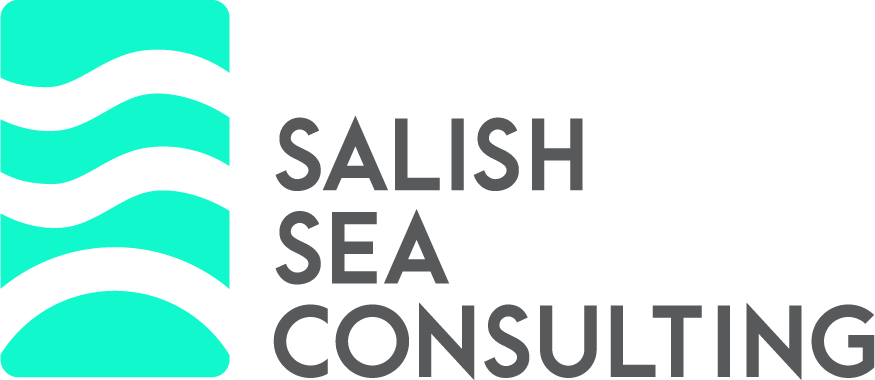Sustainability Certifications you need to know in 2025

Why get a Sustainability Certification?
Getting certified by a trusted program is a smart way for individuals and businesses to demonstrate their values, improve performance, and build trust. These certifications offer practical frameworks rooted in core sustainability principles, helping organizations align their day-to-day practices with long-term environmental and social goals.
They also support stronger team engagement by fostering a culture of responsibility and shared purpose. On the customer side, certifications signal credibility—drawing in people who are actively looking to support more thoughtful, impact-driven brands.
Beyond reputation, certification programs often provide marketing resources, peer networks, and tools for navigating regulations or conducting environmental assessments. They serve as a guide for continuous improvement, helping businesses stay prepared for a rapidly changing world.
Whether you’re just starting or refining your impact strategy, certification is one way to turn good intentions into measurable progress.
What are the different types of sustainability certifications available?
Sustainability and ESG reporting certifications:
- Global Reporting Initiative (GRI) standards
- Sustainability Accounting Standards Board (SASB) Fundamentals of Sustainable Accounting Credential
Green building certifications:
Leadership in Energy and Environmental Design (LEED) Certification
General sustainability and climate change professional certifications:
Specialty certifications:
American Center for Life Cycle Assessment Life Cycle Assessment Certified Professional
Product Stewardship Society Certified Professional Product Steward
Events Industry Council Sustainable Event Professional Certificate
International Supply Chain Education Alliance
Organic and sustainable materials certifications:
Sustainable business certifications:
Renewable energy certifications:
Renewable Energy Professional Certification (REP)
Sustainability certifications are professional credentials that demonstrate an individual's or organization's knowledge and expertise in best practices, standards, and strategies.
When choosing a sustainability certification, it is important to research and evaluate different certifications based on their criteria, reputation, and relevance to your field of work. Know the differences between your career and your company.
How do sustainability reporting certifications and SASB differ in terms of scope?
Coverage: Sustainability reporting certifications, such as the Global Reporting Initiative (GRI) standards, guide a wide range of sustainability issues and apply to various stakeholders, including investors, employees, customers, regulators, and the wider public. In contrast, SASB Standards are industry-specific and focus on financially material sustainability information for investors.
- Industry focus: GRI standards cover a wide range of industries, while SASB Standards are organized by industry and provide specific guidance on what companies should report within their respective industries. This industry-specific approach allows SASB to address the most relevant sustainability issues for each sector.
- Materiality: GRI standards adopt a principle-based approach, focusing on materiality and stakeholder engagement. SASB Standards, on the other hand, concentrate on financially material sustainability issues that are reasonably likely to have a material impact on financial performance or condition.
- Dimensions: SASB Standards include disclosure topics across five sustainability dimensions: environment, social capital, human capital, business model, and innovation, and leadership and governance. GRI standards cover a broader range of sustainability issues, guiding various aspects of environmental, social, and governance (ESG) performance.
What are the five sustainability standards covered by SASB certification
The Sustainability Accounting Standards Board (SASB) Standards cover five sustainability dimensions, which are designed to help companies identify, manage, and report on financial material sustainability information.
These dimensions are:
- Environment: This dimension focuses on environmental factors, such as greenhouse gas emissions, water management, and waste management, that can have a material impact on a company's financial performance.
- Human Capital: This dimension addresses human capital-related factors, including employee health and safety, employee engagement, diversity and inclusion, and labor practices, which can affect a company's financial performance.
- Social Capital: This dimension encompasses social capital-related factors, such as product safety, customer privacy, and community engagement, that can have a material impact on a company's financial performance.
- Business Model and Innovation: This dimension focuses on business model and innovation-related factors, including resource management, life-cycle assessment, and research and development, which can affect a company's financial performance.
- Leadership and Governance: This dimension addresses leadership and governance-related factors, such as board diversity, executive compensation, and political contributions, which can have a material impact on a company's financial performance.
These dimensions are further refined into 26 general sustainability issues, providing a structure for SASB's industry-specific standards.
How do I choose a sustainability certification?
Obtaining a sustainability certification can provide numerous benefits, such as demonstrating your commitment to sustainability, improving environmental and social performance, and gaining a competitive edge in the market. However, with a variety of certifications available, it can be challenging to determine which one is the best fit for your business. Here are some tips to help you choose the right sustainability certification:
Evaluate Compatibility
The first step is to assess the compatibility of each certification with your industry, product, or service. Some certifications may be specifically designed for certain industries or types of businesses, while others may have broader applications.
Consider Sustainability Goals and Priorities
Next, examine the specific sustainability goals and priorities that each certification addresses. Some certifications may focus on reducing carbon emissions, while others may prioritize social responsibility or ethical sourcing. Consider your business's unique sustainability goals and priorities when evaluating your options.
Narrow Down the Options
Once you have assessed compatibility and sustainability goals, focus on the certifications that align closely with your business objectives. Consider factors such as the reputation of the certification organization, the recognition and credibility of the certification, and the requirements for obtaining and maintaining the certification.
Consult or Seek Expert Advice
Engage with sustainability certification companies to gain insights and clarify any questions. Many certification organizations offer consultations or webinars to help businesses understand the certification process and requirements. You can also seek advice from sustainability consultants or industry experts who can offer objective guidance on choosing the right certification for your business.
Consider the Expectations of Your Target Audience
Consider the expectations of your customers, investors, or other stakeholders when evaluating sustainability certifications. Some certifications may be more widely recognized or valued by your target audience, which can be a significant factor in your decision-making process.
Evaluate Financial Costs
Consider the financial costs associated with obtaining and maintaining the certification. Some certifications may require significant investments in time, resources, and money, while others may have more affordable options. Consider the potential return on investment and the long-term benefits of obtaining a sustainability certification when evaluating financial costs.
Assess Time and Resources
Finally, evaluate the time and resources required for data collection, documentation, and reporting. Some certifications may require extensive data collection or complex documentation processes, which can be time-consuming and resource-intensive. Consider your business's capabilities and resources when evaluating the time and resources required for certification.
By following these tips, you can choose a sustainability certification that aligns with your business objectives, meets the expectations of your target audience, and supports your sustainability goals and priorities. With the right certification, you can demonstrate your commitment to sustainability, improve your environmental and social performance, and gain a competitive advantage in your industry.




